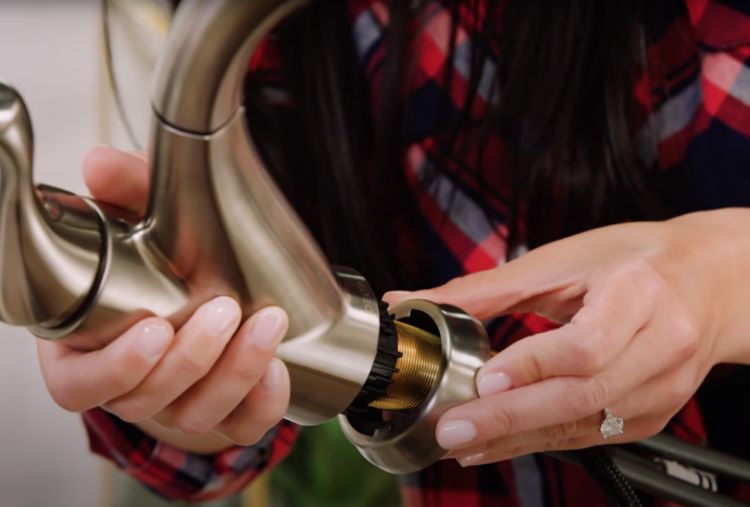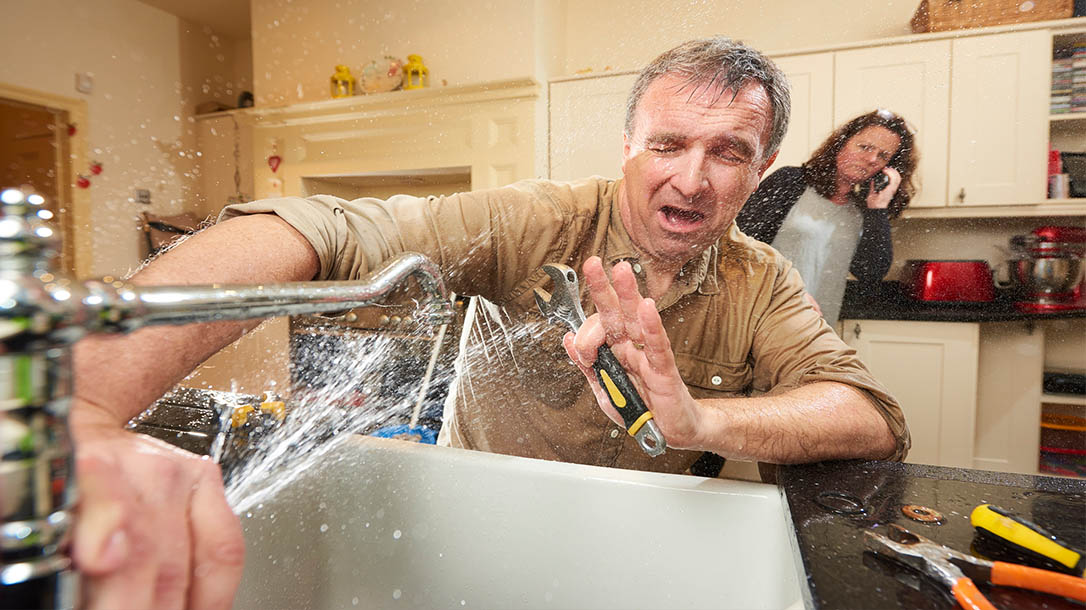How It's Critical to Rectify a Dripping Faucet
How It's Critical to Rectify a Dripping Faucet
Blog Article
Do you find yourself hunting for answers involving What Causes Leaky Faucets & How To Fix Them?

Trickling taps might appear like a small aggravation, yet their impact goes beyond simply the inconvenience of the noise. From wasting water to sustaining unneeded economic expenses and health and wellness dangers, overlooking a dripping faucet can bring about various consequences. In this short article, we'll delve into why it's important to resolve this typical household problem promptly and efficiently.
Waste of Water
Environmental Effect
Leaking taps add considerably to water wastefulness. According to the Epa (EPA), a solitary faucet dripping at one drip per second can waste greater than 3,000 gallons of water annually. This not just stress water resources but likewise influences communities and wildlife dependent on them.
Financial Costs
Boosted Water Expenses
Beyond the ecological impact, trickling faucets can blow up water costs considerably. The built up wastage with time equates into higher utility expenditures, which can have been avoided with prompt fixings.
Potential Home Damages
Additionally, long term trickling can lead to damage to fixtures and surfaces surrounding the tap. Water accumulation can create discoloration, deterioration, and also architectural concerns if left ignored, leading to extra fixing costs.
Wellness Concerns
Mold and Mold Growth
The constant visibility of wetness from a dripping faucet creates a suitable setting for mold and mildew and mold growth. These fungi not only compromise indoor air quality but also pose health threats, specifically for individuals with respiratory system conditions or allergic reactions.
Waterborne Illness
Stationary water in dripping taps can become a breeding place for bacteria and various other pathogens, increasing the danger of waterborne conditions. Pollutants such as Legionella microorganisms flourish in stagnant water, potentially leading to severe ailments when ingested or inhaled.
DIY vs. Professional Repair service
Pros and Cons of DIY Repair Service
While some might try to fix a leaking tap themselves, DIY repair services feature their very own collection of difficulties. Without appropriate expertise and tools, DIY attempts can worsen the concern or cause insufficient repairs, extending the issue.
Advantages of Employing an Expert Plumber
Working with a specialist plumber makes certain that the underlying cause of the trickling tap is attended to properly. Plumbing technicians have the competence and tools to identify and fix tap issues efficiently, conserving time and decreasing the danger of further damages.
Step-by-Step Overview to Dealing With a Dripping Tap
Devices Required
Prior to attempting to deal with a trickling tap, gather the required tools, consisting of an adjustable wrench, screwdrivers, replacement components (such as washing machines or cartridges), and plumber's tape.
Typical Faucet Issues and Their Solutions
Recognize the kind of faucet and the particular concern causing the drip. Usual issues consist of worn-out washing machines, rusty valve seats, or defective O-rings. Describe manufacturer instructions or online tutorials for step-by-step advice on repair work.
Safety nets
Regular Upkeep Tips
To avoid trickling faucets, do routine maintenance such as cleansing aerators, examining for leaks, and replacing worn-out components without delay. Furthermore, consider mounting water-saving gadgets or updating to much more effective components.
Value of Prompt Repair Works
Addressing trickling faucets as quickly as they're discovered protects against additional water wastefulness and prospective damage, inevitably saving both water and money in the future.
Influence On Residential Or Commercial Property Worth
Perception of Well-Maintained Residential Property
Maintaining a residential or commercial property in good condition, consisting of dealing with upkeep problems like leaking taps, improves its viewed worth and value among possible customers or renters.
Influence on Resale Value
Properties with properly maintained plumbing fixtures, consisting of faucets, command higher resale values in the real estate market. Attending to dripping faucets can contribute to a positive impact throughout residential or commercial property evaluations and arrangements.
Environmental Duty
Private Contribution to Conservation
Taking responsibility for fixing leaking faucets straightens with broader efforts toward water preservation and environmental sustainability. Every person's actions jointly make a considerable influence on preserving valuable sources.
Lasting Living Practices
By focusing on timely repairs and adopting water-saving practices, people add to lasting living techniques that benefit both existing and future generations.
Conclusion
Attending to a trickling faucet exceeds plain ease; it's an important action towards preserving water, lowering economic expenses, and protecting health and residential or commercial property. Whether through DIY repair work or expert support, acting to take care of leaking faucets is a tiny yet impactful method to promote liable stewardship of resources and add to a much healthier, much more lasting future.
Most Common Reasons for a Leaky Faucet and How to Stop the Drip
Whether it’s your kitchen faucet leaking or a bathroom faucet leaking, one leaky faucet can waste anywhere from three to 30 gallons of water every single day. If the constant drip-drip-drip doesn’t get your attention, your water bill will. The good news is that, by following a few simple steps, chances are pretty good you can fix the problem yourself.
Why is it dripping?
Before you start taking things apart, let’s break down some of the most common causes of a leaky faucet.
Bad O-ring.
A cartridge is a valve that controls the flow of water into the faucet spout. On cartridge faucets there’s an O-ring—the little disc attached to the stem screw that holds the faucet handle in place. If it’s loose or worn-out, it can cause your sink handle to leak. Of course, the cartridge itself could be worn out. If that’s the case, make sure you replace it with the exact same kind.
Corroded valve seat.
The valve seat connects the faucet and the spout. If the leak seems to be coming from the spout, it might be because a buildup of water sediment has corroded the valve seat.
Worn-out washers or seals.
A leaky spout could be caused by a bad washer that rests against the valve seat. It’s just a matter of time before friction takes its toll. It could also be the wrong size washer or one that’s been installed incorrectly. Water sediments can also corrode inlet and outlet seals.
Water pressure.
If the faucet only drips now and then, or when you turn the handles a certain way, you should probably check your home’s water pressure.
Loose or broken parts.
The adjusting ring and packing nuts in the stream screw can become loose over time, causing your sink handle to leak. Try tightening or replacing the packing nut. If the leak is coming from the pipes underneath the sink, you probably have a broken pipe or fitting. If that’s the case, you should definitely call a plumber.
Know your faucet.
Faucets come in a variety of types. Each one has its own assembly—and its own possible causes of leaks. Learning about the four most common kinds of faucets will help you know how to take them apart and make any repairs.
How to stop a leaky faucet
Fixing that leaky faucet doesn’t have to take a lot of time, money, or expertise. It’s usually a simple matter of replacing a worn-out washer or gasket, a loose O ring, or another part. Chances are really good you can do this yourself if you follow these simple steps.
Shut off the water.
Before you tackle the faucet, cut off the water supply to the sink. There should be one valve for hot and one for cold. Hand-turn them clockwise with your hands till they close. If there are no valves under the sink, head to the basement and shut off the main water supply to the house. Then turn on the faucet until it empties out the water that’s still in the line and you’re ready to start. It’s a good idea to cover the sink drain with a plug or a rag so you don’t lose any small pieces and parts while you’re working.

I am very eager about Should I Repair or Replace a Leaky Faucet? and I am hoping you appreciated the blog posting. Are you aware of another person who is involved in the niche? Feel free to share it. Thanks for taking the time to read it.
Report this page